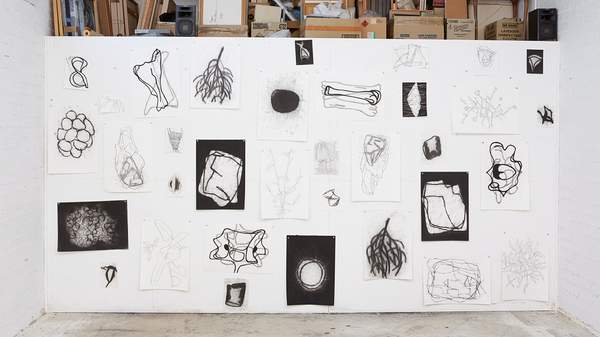Overview
It could be argued that drawing is the most ancient and enduring form of expression, the bedrock of visual culture. That being said, it has typically served as a preparatory medium, associated with the draft phase of an artist’s practice. Following on from the discontinued Dobell Prize for Drawing, this new biennial at the AGNSW aims to celebrate the stand-alone power of drawing.
Natural landscapes are at the heart of this exhibition featuring ten artists. Plumbing Australian deserts and bushland, many of these works have an ephemeral quality. It seems as if there is more attention paid to sensory impressions than visual detail. Although drawing is the common root, it is sometimes less conspicuous, concealed underneath other mediums such as watercolour and pastel.
Upon entering the space, Mary Tonkin’s panoramic drawing immediately jumps out. At 14 metres long, this detailed outline of a dense forest scene was drawn entirely on-site at the leafy Melbourne suburb of Kalorama. Peter Sharp’s the things you pick up is another monochrome series, made up charcoal drawings of found objects. Without the companion sculpture, a large branch and a boulder, they might feel a bit underwhelming. However, there is something quite nice about the way these works are hung — raw paper pinned up with clear tacks.
On a smaller scale, Tom Carment has produced a number of tentatively sketched drawings filled out with watercolour. From Cape Leeuwin to Kings Cross, he is a nomadic draughtsman that compulsively records his environment. There is something quite whimsical about these works, which are fleeting impressions of everyday life. Similarly, John R. Walker describes himself as an episodic artist, attracted to natural divides like creeks and rivers. There is a sensory immediacy to his work as he fills out the foreground with thick colours and uses thin lines to map the surrounding landscape.
Instinctive pleasure can be had from Ivy Pareroultja’s watercolour landscapes, which have a strong rhythmic quality. Between lilac hills and turquoise shrubs, her use of bold colours does not feel overstated either. Although I didn’t see the performance in action, Gosia Wlodarczak’s work is drawn directly onto the gallery windows, using the Woolloomooloo skyline as a kind of stencil. There is a mix of both industry and nature, reflecting the texture of inner-city Sydney. But in some areas, her drawings are indiscernibly dense, looking like a chaotic tangle of lines.
On the whole, this is an exhibition for quiet contemplation. While some works are more compelling than others, there is a strong reverence for nature that feels particularly Australian.
Features
Information
When
Friday, November 21, 2014 - Monday, January 26, 2015
Friday, November 21, 2014 - Monday, January 26, 2015
Price
FREE-
Event Type
